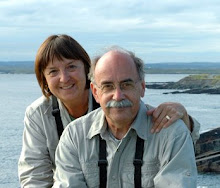Following a déjà vu breakfast we headed out for the day (José promised he would speak with the staff to make some changes for the next morning). First up was a stop at another Jocotoco Foundation Reserve: Utuana.
Located in the southwestern highlands of Ecuador, Utuana’s elevation is approximately 8300 feet. As with many of our stops we would have a chance – usually the one and only chance – of finding rare and local species in these tiny ranges of southern Ecuador and northern Peru (remember – we’re still on the border with Peru).
The road leading to Utuana has remnant patches of bamboo, home to some of the specialties. However, dense fog prevented us from finding any. Heard some – just couldn’t see them. Birding along the highway in dense fog was also not particularly safe given how Ecuadorian drivers have no regard for limited lines of sight in dense fog relative to speed. We would try again later.
Utuana habitat is a transitional zone between humid montane forest laden with epiphytic plants and dry forest. Here we found patches of evergreen in the Bosque de Hannes. Large banks of clouds drifted through, at times lowering our visibility to a few feet. Just as quickly, clouds would drift away, opening up dramatic views of the valley.
Unlike other Jocotoco properties we had visited, this one lacked a lodge or a large covered pavilion. No matter. We explored trails that skirted the hilltop and lead through open pasture, mixtures of tall shrubs, and dense woodlots. Check out vegetation types for a complete overview of Ecuador's vegetation diversity. A small station of hummingbird feeders (they had just been filled that morning) produced new to our trip hummingbird species. One target species we hoped to find, Black-crested Tit-Tyrant, finally made an appearance – and then was seen well a few more times. More first-time trip birds included: Red-crested Cotinga, Great Thrush, Line-cheeked Spinetail, Chapman’s Antshrike, Glossy-black Thrush, Black-crested Warbler, Masked Flowerpiercer, Rufous-chested Tanager, Blue-and-black Tanager, Silver-backed Tanager, Blue-capped Tanager, Black-cowled Saltator, Bay-crowned Brush-Finch. New hummingbirds: Speckled Humminbird, Rainbow Starfrontlet (dazzling!), Purple-throated Sunangel (wow!), Black-tailed and Green-tailed Trainbearers, White-bellied Woodstar.
Following a box lunch break we re-boarded our bus. During the return trip to Macará we stopped to bird another entrance to Jorupe. En route we added Band-tailed Pigeon. More species added during the day: Tawny-rumped Tyrannulet, Unicolored Tapaculo, Chested-crowned Antpitta (heard only), White-crested Elaenia, Streak-throated Bush-Tyrant, Slaty-backed Nightingale-Thrush, White-sided Flowerpiercer.
By the end of the hike at Jorupe, and knowing we would have another very long day of “bus time” after we left Macará the next morning, the group convinced José that we should return to the hotel during daylight and allow for a bit more time before dinner.
Back at the hotel a small impromptu party was held on the fifth floor in Melissa and Claire’s room. Their room not only had a window, but it also had air conditioning! Oh, my! So this is how the other half lived! Recalling our last trip to Ecuador, Melissa and Claire at times had the uncanny misfortune of being assigned rooms with no hot water. We cut them some slack.
One last meal at D’Marcos accompanied by a good deal of table banter. Then it was off to bed. Given our challenging accommodations thus far José indicated that our next overnight would be much nicer. Given José’s sometime vague answers to “how long before we get there”, time would tell.



No comments:
Post a Comment